Cutting Back Heavenly Bamboo – Start With Any Canes That Look Relatively Bare

Reviewed By COLIN SKELLY

Colin is a Horticulturist and Horticultural Consultant with experience in a range of practical and managerial roles across heritage, commercial and public horticulture. He holds the Royal Horticultural Society’s Master of Horticulture award and has a particular interest in horticultural ecology and naturalistic planting for habitat and climate resilience.
IN THIS GUIDE
NANDINA GUIDES
Container Growing
Pruning
Also known as heavenly bamboo, Nandina domestica provides all-season charms that include wonderfully shaded and tinted foliage, a summer display of small flowers in panicles, with autumn bringing further colour in the form of fiery leaves.
Often to benefit from these charms, you might have to prune your heavenly bamboo shrubs, but heavenly bamboo plants naturally have a neat, tidy habit and do not require much pruning.
Most varieties sold in the UK are dwarf varieties and compact varieties which are slow growing.
| Difficulty | Easy – Hard (depends on type of pruning) |
| Equipment Required | Secateurs, pruning shears, gardening gloves |
| When To Prune | Spring |
Underneath we discuss everything you need to know about pruning these lovely shrubs.
When To Prune Nandina
Prune Nandina domestica in mid-to-late spring – late April is ideal in most regions of the UK.
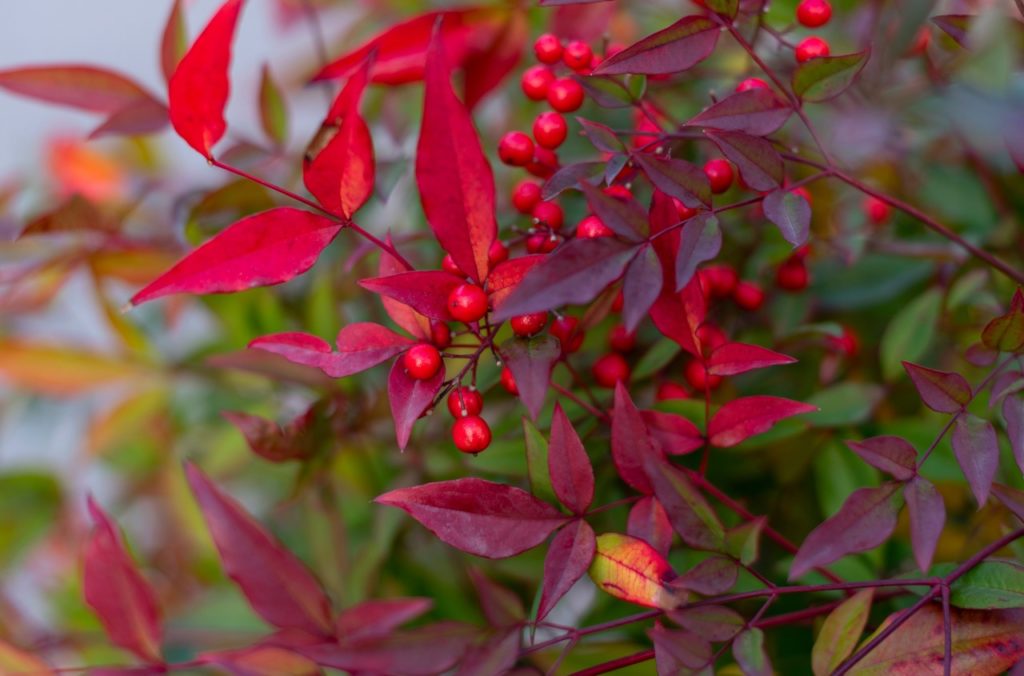
Sterilise your secateurs or pruning shears with a solution of bleach or with readily-available hand sanitiser and I’d suggest that you wear gardening gloves before pruning.
Can I Prune Heavenly Bamboo In Summer?
It is not the best idea to prune sacred bamboo in the height of summer, as this is likely to affect flowering.
Instead, prune in late spring after the last frosts, around April or May time, when it will be easier to avoid pruning new growth.
If it is a pressing matter, you can also wait until early autumn after flowering has finished.
How To Prune Nandina
First, prune any cane that may have become relatively bare; these will usually be woody and visible near the base of the shrub.
If the shrub is congested with one cane rubbing against another, prune the older cane.
Trim to a node with a tuft of foliage any branch that is diseased, damaged or grown out of proportion to the rest of the shrub.
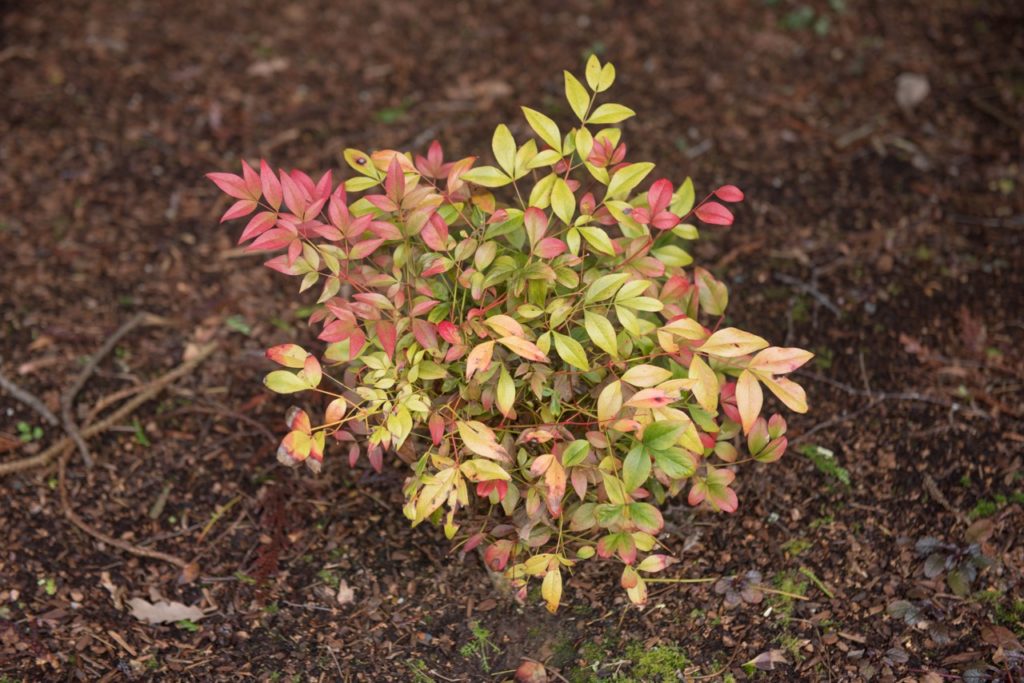
Other than these obligatory steps, the rest of the pruning is strictly optional.
However, you should not prune or trim any new shoots and avoid pruning or trimming the previous year’s canes or branches.
You may trim a cane from the previous year only if absolutely necessary, like if it is jutting out horizontally or is damaged.
For An Open & Airy Look
Select well-spaced healthy canes for retention and mark out older, congested canes for pruning.
These should comprise no more than one-third of the number of canes and you should prune them right at the base.
From the canes that remain, prune or trim the branches or side shoots.
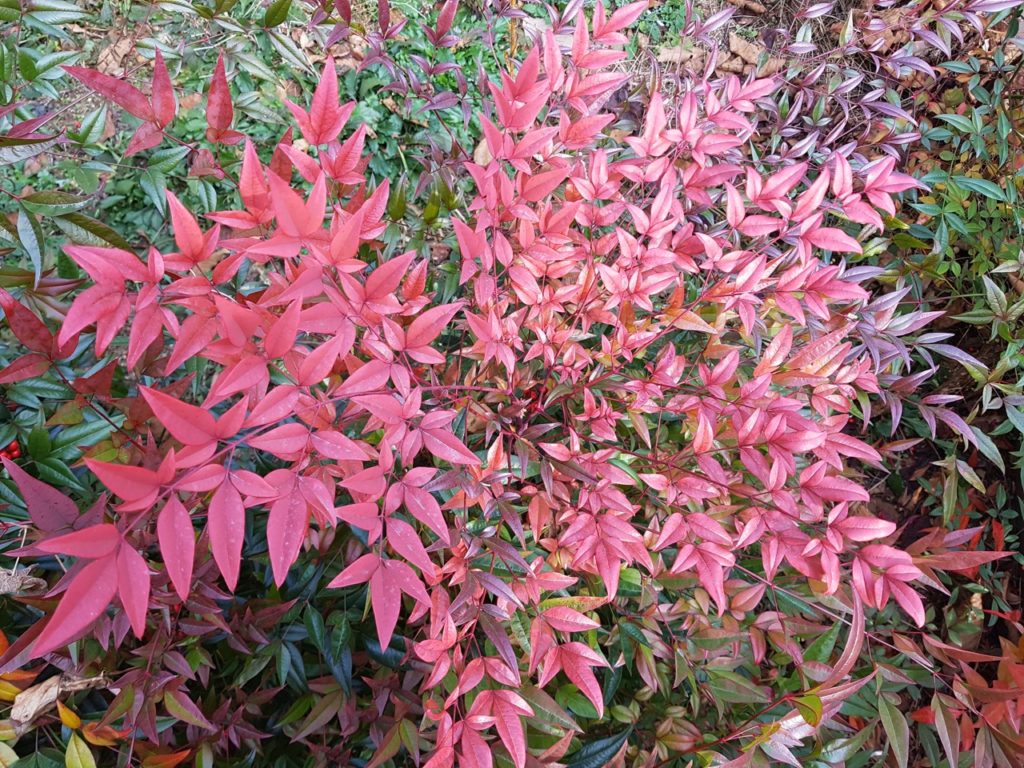
Prune the branches that are older and closer to the base of the cane and trim the shoots that are higher up.
Again, confine this pruning to one-third (or less) of the mass of the shrub.
Repeated pruning of this type will result in an open, elegant shrub.
I believe that hobbyist gardeners with limited time should opt to prune this plant in this fashion.
For A Compact & Dense Form
Though certainly not a conventional topiary plant, heavenly bamboo can be pruned into simple shapes or it can be pruned so as to achieve a compact, dense form.
Allow the plant to grow for 2 years, then in the third year, cut the entire shrub down to about one-third of its overall size.
Using pruning shears, cut just above leaf nodes.
After such a cutback, fertilise the plant.
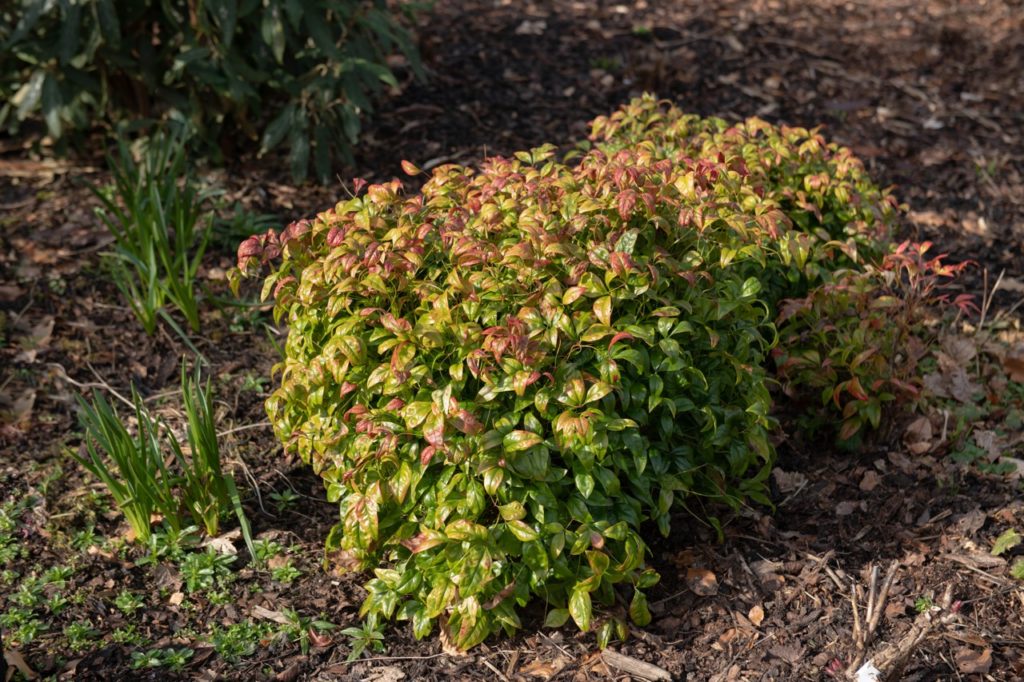
A helping of slow-release balanced fertiliser or monthly feedings of an organic balanced fertiliser will be helpful.
The next spring, simply trim the newer stems and shoots, trying to do so just above leaf nodes, to achieve the desired shape.
Even if you have no particular shape in mind, this type of pruning will make the shrub dense and compact.
Do not prune canes or inner branches or shoots.
For A Natural Appearance
This last type of pruning is not easy and is time-consuming as you have to select specific canes and branches – some for pruning and others for trimming to a certain length.
The aim is to achieve or enhance a ‘natural’ appearance.
This is achieved by staggering the lengths of the canes and branches so that the shrub looks somewhat tiered.
Do not prune or cut inner canes; prune or cut outer canes or the inner side-branches, except to ‘open up’ the shrub a little.
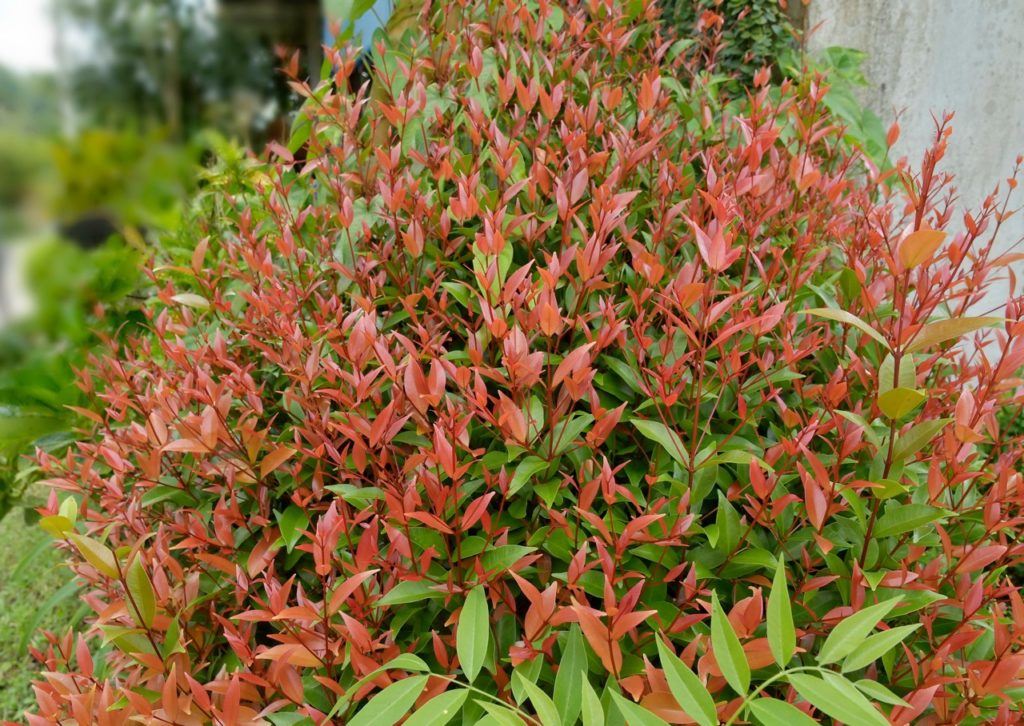
Cut the canes to different lengths, trimming one-third to two-thirds of their lengths.
Similarly cut the side branches to different lengths, trimming 30-50% of their lengths.
Trim the canes and side-branches to these different lengths with an eye to creating a tiered or staggered form.
The lower the side branch, the greater its length should be.
In all cases, when canes or branches are trimmed, make the cut just above a leaf node, preferably just above a tuft of leaves.

